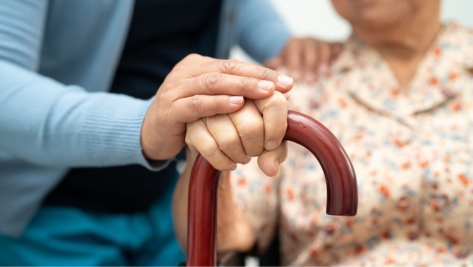Spinal Cord Injury is an Insult to The Spinal Cord Resulting in a Change

Spinal Cord Injury
Spinal cord injury (SCI) is an insult to the spinal cord resulting in a change, either temporary or permanent, in the cord’s normal motor, sensory, or autonomic function. Such injuries can result in tetraplegia, paraplegia, or death.
It is now understood that approximately 2,500 people sustain or are diagnosed with a life-changing SCI each year in the UK and the total number of those living with a SCI in the UK is estimated at 50,000. SCI is a complex condition that can affect all bodily systems. This blog deals briefly with spinal anatomy and the classification of SCI.
Spinal Anatomy
The spinal column consists of 5 regions, as follows:
- Seven cervical vertebrae: (C1 to C7). The neck region which has the greatest range of flexibility and supports the full weight of the skull.
- Twelve thoracic vertebrae: (T1 to T12). The upper to mid back; its main function is to hold the ribcage, which in turn protect the major organs.
- Five lumbar vertebrae: (L1 to L5). The lower back. Its main function is to support the body’s weight.
- Sacrum: (S1 to S5). Pelvis region, connecting the spine to the hip bones.
- Coccyx: The tailbone, the final segment of the vertebral column with attachments to various muscles, tendons and ligaments.
Classification of SCI
Spinal cord injuries can be classified based on function (how much feeling and movement you have) and on where the damage occurred. When a nerve in the spinal cord is injured, the nerve location and number are often used to describe how much damage there is. For example, a C7 injury is associated with the seventh cervical nerve of the neck and its effect on feeling and movement. The higher the damage occurs on the spinal cord, the more of the body is affected.
The American Spinal Injury Association (ASIA) define the International Standards for the Neurological Classification of Spinal Cord Injury. The ASIA Impairment Scale assigns the SCI a grade based on its severity. The ASIA Impairment Scale determines the category of SCI, which typically is complete or incomplete:
- Complete SCI occurs when there’s a total loss of function (motor) and feeling (sensory) below the injury level.
- Partial/incomplete SCI: some function and feeling remain below the injury level. Typically, one side of the body has more function or feeling than the other side. There are different types, or syndromes, of incomplete SCI, including central cord syndrome, Brown-Séquard syndrome, anterior cord syndrome, and posterior cord syndrome.
Grades range from A to E, with A being the most severe injury and E being the least severe, as follows:
Grade A – Complete – Complete sensory or motor function loss below the level of injury.
Grade B – Incomplete – Sensation is preserved below the level of injury, but motor function is lost.
Grade C – Incomplete – Motor function below the level of injury is preserved, with more than half of the main muscles receiving a less than 3 grade on the ASIA motor score.
Grade D – Incomplete – Motor function below the level of injury is preserved, with more than half of the main muscles receiving at least a 3 or greater grade on the ASIA motor score.
Grade E – Normal – Normal sensation and motor function.
Please note
The information on the Anthony Gold website is for general information only and reflects the position at the date of publication. It does not constitute legal advice and should not be treated as such. It is provided without any representations or warranties, expressed or implied.
Related Insights
Our Latest Injury & Medical Claims Insights
- October 6, 2025
Jess’s Rule – a welcome reminder to reconsider persistent symptoms
- September 26, 2025
Intermediate track injury claims: the rise of early settlement offers
- August 26, 2025
Anthony Gold Solicitors welcome Helen Whittam as a new Support and Rehabilitation Coordinator in the Injury and Medical Claims Team
- August 19, 2025
Contributory negligence and children
- August 13, 2025
Video: From tragedy to triumph – Eliezer’s journey after a life-changing accident
- July 9, 2025
What is Contributory Negligence and How Could it Affect Your Claim?
Latest Articles
View allGuide: November 7, 2025
Guide: November 7, 2025
Guide: November 6, 2025
Contact the Conveyancing team today
Contact us today
"*" indicates required fields
Contact the commercial
& civil Dispute team today
"*" indicates required fields
Contact the Conveyancing team today
Contact the Conveyancing team today
Contact the Wills, Trusts
& Estates team today
Contact the Court of
Protection team today
Contact the Employment Law team today
Contact the Clinical Negligence team today
Contact the Family & Relationships team today
Contact the Personal Injury Claims team today
Contact the leasehold & Freehold team today
Contact the Corporate & Commercial team today
Contact the housing & disputes team
"*" indicates required fields















